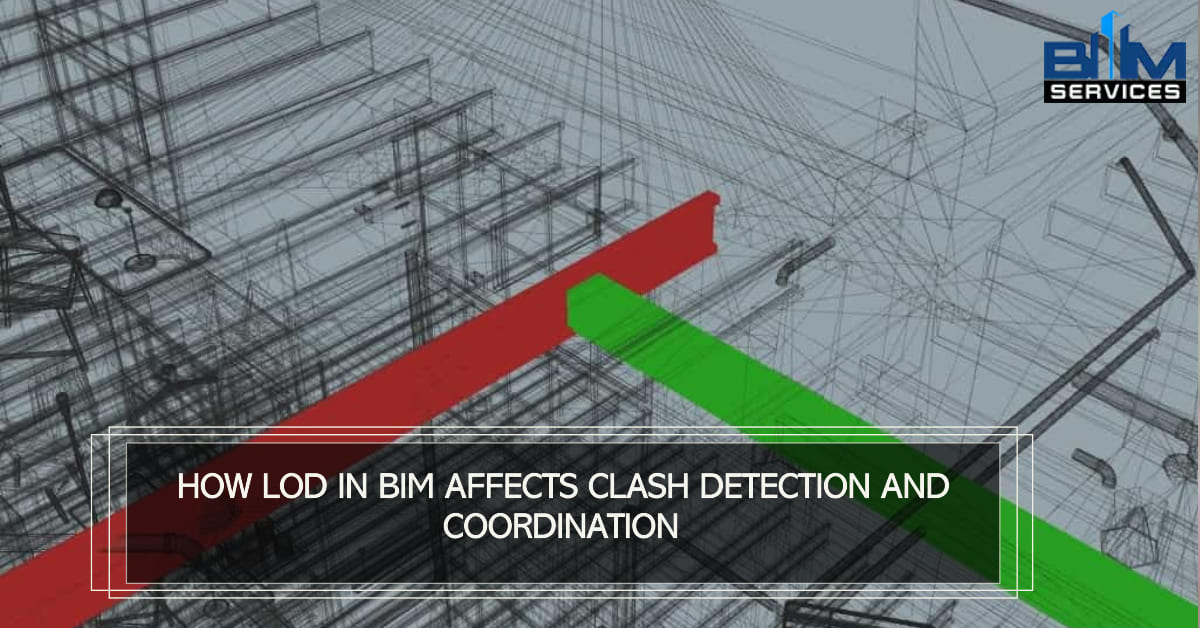How LOD in BIM affects Clash Detection and Coordination

Introduction
The construction industry continues to benefit from Building Information Modeling due to its various advantages. One crucial aspect that makes BIM an invaluable tool is clash detection, which ensures smooth coordination among the different disciplines involved in the building process. The concept of Level of Detail (LOD) determines the level of precision and information stored within BIM elements, making it a key factor that influences the clash detection process. In this article, we will discuss the significance of LOD in Clash Detection Services of BIM. By examining how LOD levels impact clash identification and coordination, we uncover their potential to streamline construction processes and mitigate costly conflicts. Real-world examples will highlight the importance of setting appropriate detailing requirements and leveraging higher LOD levels for improved clash detection and overall project success. Emphasizing the practical implications, we underscore the pivotal role of LOD in optimizing clash detection and coordination in the context of Building Information Modeling.
LOD and Clash Detection
Level of Detail is a critical aspect of Building Information Modeling (BIM) that profoundly impacts clash detection and coordination in construction projects. LOD defines the extent of information and precision in BIM elements, ranging from basic geometric shapes to detailed components. Higher LOD levels offer more accurate representations of building elements, enhancing clash detection by identifying potential conflicts between different systems and disciplines early in the design phase. Related Post: LOD Concepts: Significance of working on BIM Modeling Services with specific Level of detailing A higher LOD enables seamless collaboration among stakeholders, reducing the likelihood of costly construction errors and rework. Conversely, lower LOD levels may lead to oversight of clashes and coordination issues, potentially causing delays and budget overruns. Therefore, embracing higher LOD levels is vital for optimizing clash detection and coordination processes in BIM projects.
Table of Contents
How a higher LOD enhances the preconstruction process
Enhanced Clash Detection Accuracy:
Accurate clash detection depends on various factors with LOD being one of them. A higher LOD means that the model has more detail and accuracy, which can help identify more potential clashes. However, a higher LOD also means that the model is more complex and may require more processing power to perform clash detection. With software such as Navisworks and Revit, identifying and resolving clashes has been greatly enhanced.
Cost and Time Savings:
A more detailed BIM model with higher LOD enhances cost estimation accuracy by providing precise labeled information. This enables better understanding of project components, materials, and quantities, leading to more informed and reliable cost assessments. Early clash resolution avoids costly rework, ensuring resources are utilized effectively and construction progresses smoothly.
Improved Collaboration and Communication:
Utilizing higher LOD levels in BIM models fosters better collaboration among project stakeholders. With a more detailed representation of the building, teams can communicate effectively, share insights, and make informed decisions together. This enhanced collaboration streamlines coordination efforts, reduces misunderstandings, and ensures all parties have a clear understanding of the project’s scope and requirements. Related Post: BIM Level of Detail (LOD) – Get ideas of each stage of a BIM modeling process
Strategies for Effective Clash Detection and Coordination
Setting Appropriate LOD Requirements:
Determining suitable Levels of Detail (LOD) for different project stages is crucial to optimizing the BIM workflow. Clear communication of LOD requirements to project participants including the BIM Outsourcing Services Providers ensures seamless collaboration and accurate clash detection.
Utilizing Automated Clash Detection Tools:
Automated clash detection software offers benefits like faster identification of clashes, reduced errors, and improved project efficiency. Popular BIM tools enhance clash detection and coordination, allowing early identification and resolution of clashes.
Integrating BIM and Construction Management:
Integrating BIM with construction management processes brings advantages such as real-time project visualization, streamlined communication, and improved clash resolution. This synergy fosters collaboration among stakeholders and enhances overall project success.
Conclusion
In conclusion, construction businesses must select LOD for their BIM models with the utmost care and diligence. The appropriate LOD requirements play a pivotal role in determining the efficiency and success of the clash detection and coordination process. By providing insights into determining suitable LOD levels for specific project stages and ensuring effective communication of these requirements to all stakeholders, construction companies can streamline their workflows, reduce errors, and enhance project coordination. Embracing automated clash detection tools and integrating BIM with construction management processes further empowers them to identify and resolve clashes promptly, leading to improved project outcomes and overall client satisfaction.